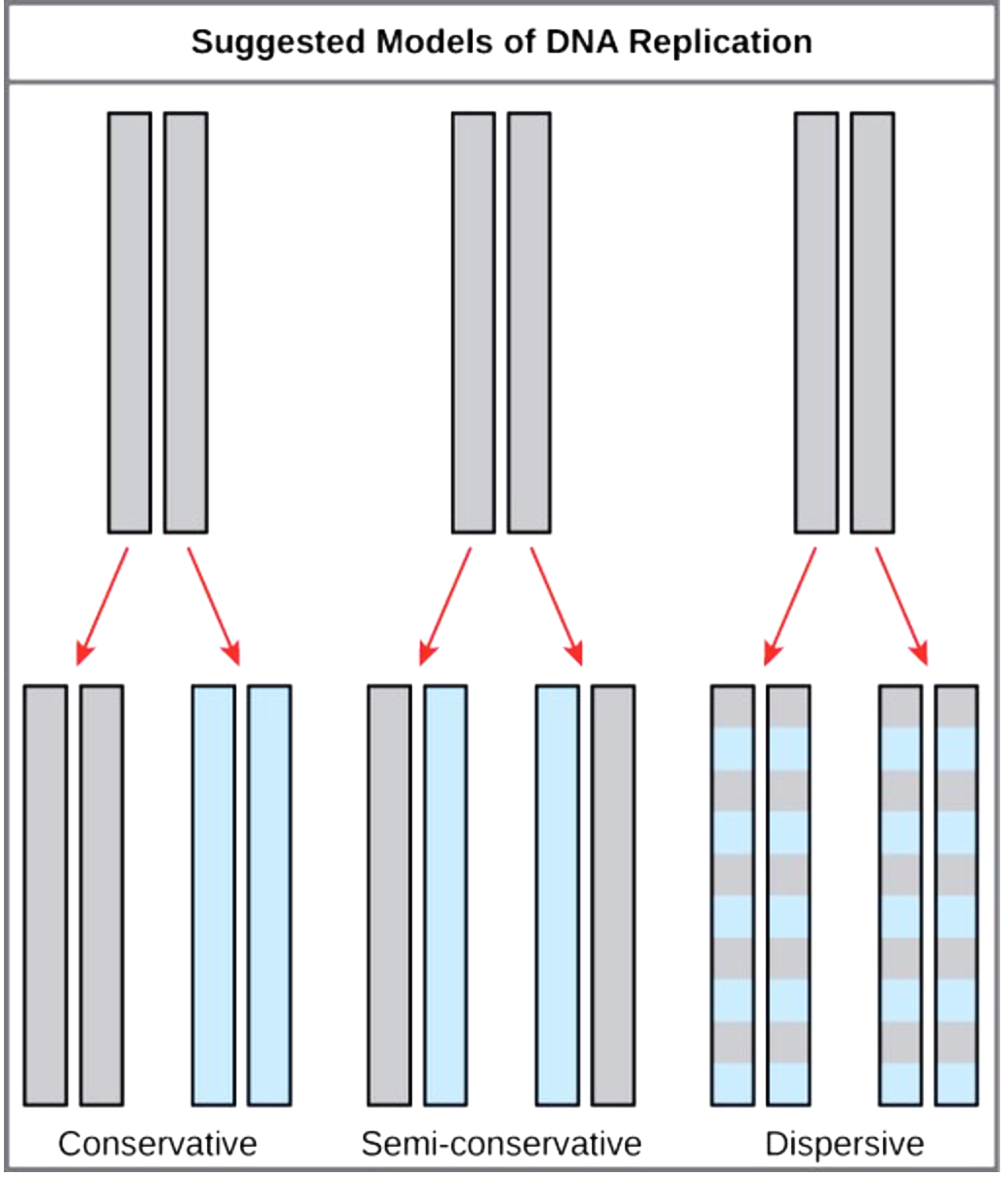
Why is DNA replication said to be semi-conservative?
Answer
566.4k+ views
Hint: DNA replication depends on the complementary base pairing. The Meselson- Stahl experiment confirmed the theory that DNA replication is semi- conservative.
Complete step by step answer:
DNA replication is semi-conservative because in the replication process the resulting DNA helix is composed of both a new strand and an old strand. This occurs because of the complementary base pairing, I.e. each nitrogenous base only pairs with its complementary pair. These two strands are identical to the initial double helix. Each strand becomes a template for the synthesis of a new strand.
- DNA replication is the process of duplication of DNA.
- DNA replication to be semi- conservative is confirmed by the Meselson- Stahl experiment in 1958.
- In the semiconservative model of DNA, each strand of DNA serves as a template for the making of a new complementary strand, resulting in two DNA molecules with one old and one new strand.
- Even though three different models of DNA replication were proposed, the semi- conservative one was most popular among scientists of that time. The other two models were named as conservative and dispersive.

- Meselson and Stahl carried out their experiment of DNA replication in E. coli bacteria for many generations.
- Analyzation of DNA from the first four- generation of E. coli confirmed that DNA replication is closest to the semi- conservative model, rather than the other two.
- Though the experiment was conducted on E. coli, the theory of DNA replication being semi- conservative is true universally.
Note: In the semi-conservative process of DNA replication, the resultant DNA helix is composed of both a new and an old strand, and both are identical to the initial helix. The reason for the semiconductive nature of DNA replication is that the nitrogenous bases can only pair with its complementary partner I.e. adenine pair with thymine and cytosine pairs with guanine.
Complete step by step answer:
DNA replication is semi-conservative because in the replication process the resulting DNA helix is composed of both a new strand and an old strand. This occurs because of the complementary base pairing, I.e. each nitrogenous base only pairs with its complementary pair. These two strands are identical to the initial double helix. Each strand becomes a template for the synthesis of a new strand.
- DNA replication is the process of duplication of DNA.
- DNA replication to be semi- conservative is confirmed by the Meselson- Stahl experiment in 1958.
- In the semiconservative model of DNA, each strand of DNA serves as a template for the making of a new complementary strand, resulting in two DNA molecules with one old and one new strand.
- Even though three different models of DNA replication were proposed, the semi- conservative one was most popular among scientists of that time. The other two models were named as conservative and dispersive.

- Meselson and Stahl carried out their experiment of DNA replication in E. coli bacteria for many generations.
- Analyzation of DNA from the first four- generation of E. coli confirmed that DNA replication is closest to the semi- conservative model, rather than the other two.
- Though the experiment was conducted on E. coli, the theory of DNA replication being semi- conservative is true universally.
Note: In the semi-conservative process of DNA replication, the resultant DNA helix is composed of both a new and an old strand, and both are identical to the initial helix. The reason for the semiconductive nature of DNA replication is that the nitrogenous bases can only pair with its complementary partner I.e. adenine pair with thymine and cytosine pairs with guanine.
Recently Updated Pages
Master Class 12 Business Studies: Engaging Questions & Answers for Success

Master Class 12 Economics: Engaging Questions & Answers for Success

Master Class 12 English: Engaging Questions & Answers for Success

Master Class 12 Maths: Engaging Questions & Answers for Success

Master Class 12 Social Science: Engaging Questions & Answers for Success

Master Class 12 Chemistry: Engaging Questions & Answers for Success

Trending doubts
What are the major means of transport Explain each class 12 social science CBSE

Which are the Top 10 Largest Countries of the World?

Draw a labelled sketch of the human eye class 12 physics CBSE

How much time does it take to bleed after eating p class 12 biology CBSE

Explain sex determination in humans with line diag class 12 biology CBSE

Differentiate between homogeneous and heterogeneous class 12 chemistry CBSE




